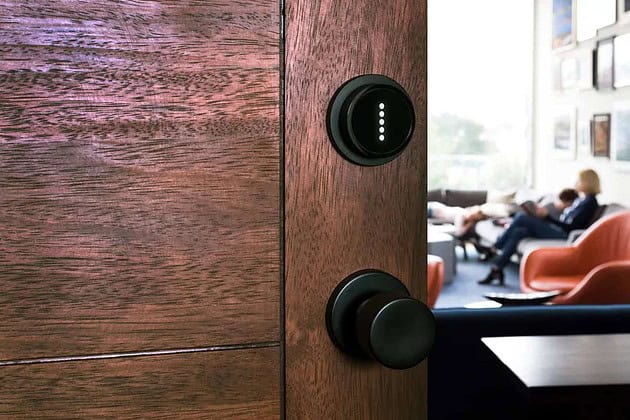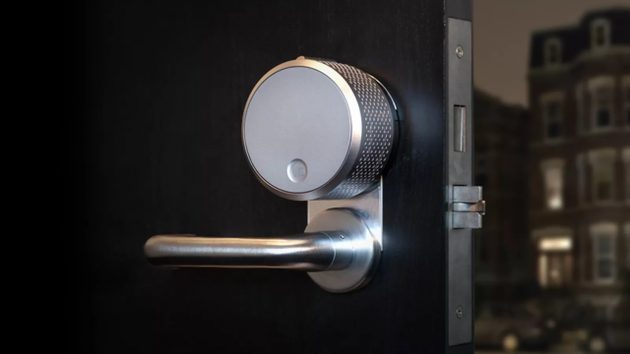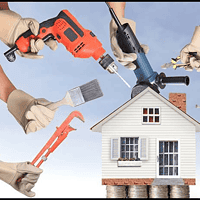Smartphones, smart fridges, smart wearables.
Even door locks are becoming increasingly smart these days.
Connected locks make the latest addition to the smart home tech family, providing a host of benefits to tech-savvy homeowners. More than anything else, they are appreciated for how convenient they are. In terms of security, however, they don’t deliver many noteworthy upgrades.
Here’s what this means, exactly:
It is a common misconception that a smart lock can make your home any safer than it already is. Just like any other tech gizmo, it can be hacked. But with proper protection, connected locks can be very useful. Read on to learn more about how to make them unbreachable.
But first,
Why Switch to a Smart Lock?
Safe or not, smart locks are still too convenient to be ignored:
- Instead of keys, they use digital codes that can be extended to whomever you want.
- Smart locks can be controlled remotely so that you don’t have to leave your comfy bed.
- They come in handy when you don’t have a free hand to rummage around for keys.
Depending on the specific type, a smart lock allows you to unlock your door using a physical key, digital code, or a smartphone application. Additionally, the app tells you whether or not you’ve locked the door and lets you control the lock remotely. You don’t even have to be at home.
Pretty neat.
How Safe Are Smart Locks?
The only problem is, most of these locks are connected to the internet.
As with every other connected device, this presents a potential cybersecurity risk. If not protected, a smart lock can be a vulnerable spot in your smart home system and an easy target for cybercriminals. Even more unsettlingly, it’s literally a gateway to your home.
A good way to protect your smart lock is to use a VPN.
Virtual private networks mask your IP address, encrypt your sensitive data, and allow you to interact with the internet (in this case, your smart lock app) under the disguise of a different IP address that cannot be traced back to your computer, phone, or physical location.
How to Choose a Smart Lock?
And now for official business.
There are a couple of steps in choosing a new smart lock for your home, so pay attention. If you’re a rookie when it comes to smart home gadgets, take notes – the following guide will help you catch up with the best smart lock options available on the market.
● Step 1: Keeping the Deadbolt
Are you ready to say goodbye to your deadbolt?
Most connected locks come with a new set of hardware and require you to replace your existing deadbolt. If you opt for this option, you’ll get a brand new home lock system with a protocol of your own choosing, but you won’t be able to rely on your good ol’ deadbolt for protection.
Alternatively, you can go for an adjustable smart lock that can be installed on the top of your existing deadbolt. This is a pretty good solution in terms of safety, as it adds another security layer around your old one. Plus, these types of smart locks are very easy to install.
● Step 2: Choosing the Protocol
How do you want to interact with your smart lock?
The three common methods are WiFi, Bluetooth, and Z-Wave. WiFi boasts an obvious cybersecurity risk, but it is more convenient than the other two. Z-Wave’s biggest setbacks are the requirement of an additional hub and the range of connection which is only about 120 feet.
Limited range is the downside to Bluetooth-enabled locks as well. All three methods come with a range of third-party integrations to make lock management even more convenient, so we suggest you choose depending on your specific needs and the type of your smart home system.
● Step 3: Keys, Pins, or Knocking?
How do you want to unlock your door?
Different smart locks offer different ways of unlocking the door. Some allow you to choose between your keys and a secret code. With others, you’ll have to go for one or the other. If you like that kind of thing, you can opt for a system that unlocks the door after you “knock” on your phone.
If you prefer the digital approach, then security is definitely a concern. While searching for your new lock, take some time to read this NordVPN review (https://nordvpn.com/review/) and some others which should help choose the best virtual private network. Pay attention to battery usage as well, or you may stay locked out if you forget to charge it.
Conclusion
Connected locks may have a drawback or two, but that’s not unfixable.
Just make home security your number one priority while choosing a smart lock, and you’ll hardly make a mistake. A little precaution goes a long way – if it were up to us, we would keep a deadbolt, install a WiFi lock on top of it, and mask the address using a VPN.
That way, you can have the best of both worlds – convenience and security.
















